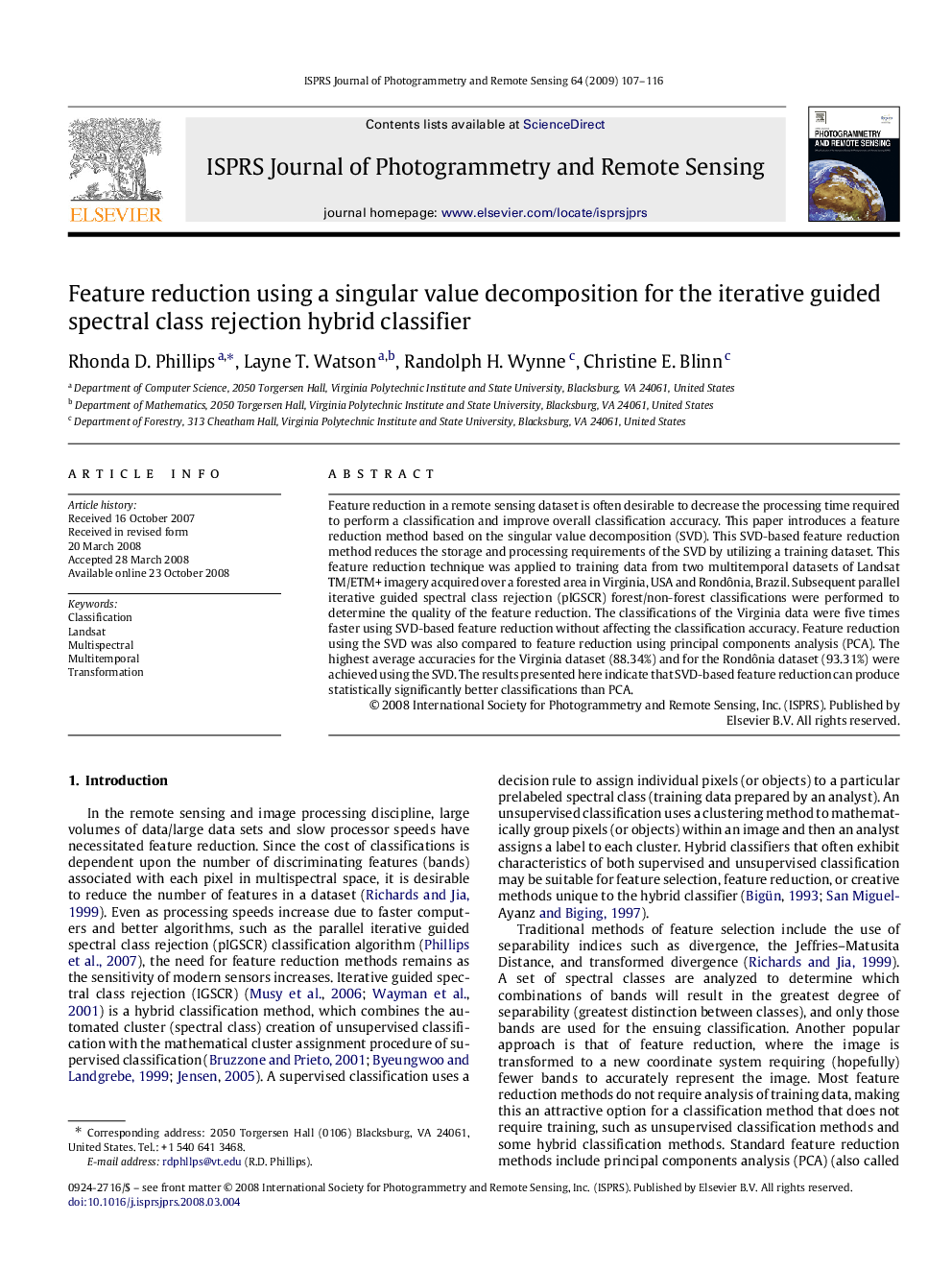| Article ID | Journal | Published Year | Pages | File Type |
|---|---|---|---|---|
| 556007 | ISPRS Journal of Photogrammetry and Remote Sensing | 2009 | 10 Pages |
Feature reduction in a remote sensing dataset is often desirable to decrease the processing time required to perform a classification and improve overall classification accuracy. This paper introduces a feature reduction method based on the singular value decomposition (SVD). This SVD-based feature reduction method reduces the storage and processing requirements of the SVD by utilizing a training dataset. This feature reduction technique was applied to training data from two multitemporal datasets of Landsat TM/ETM+ imagery acquired over a forested area in Virginia, USA and Rondônia, Brazil. Subsequent parallel iterative guided spectral class rejection (pIGSCR) forest/non-forest classifications were performed to determine the quality of the feature reduction. The classifications of the Virginia data were five times faster using SVD-based feature reduction without affecting the classification accuracy. Feature reduction using the SVD was also compared to feature reduction using principal components analysis (PCA). The highest average accuracies for the Virginia dataset (88.34%) and for the Rondônia dataset (93.31%) were achieved using the SVD. The results presented here indicate that SVD-based feature reduction can produce statistically significantly better classifications than PCA.
